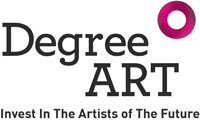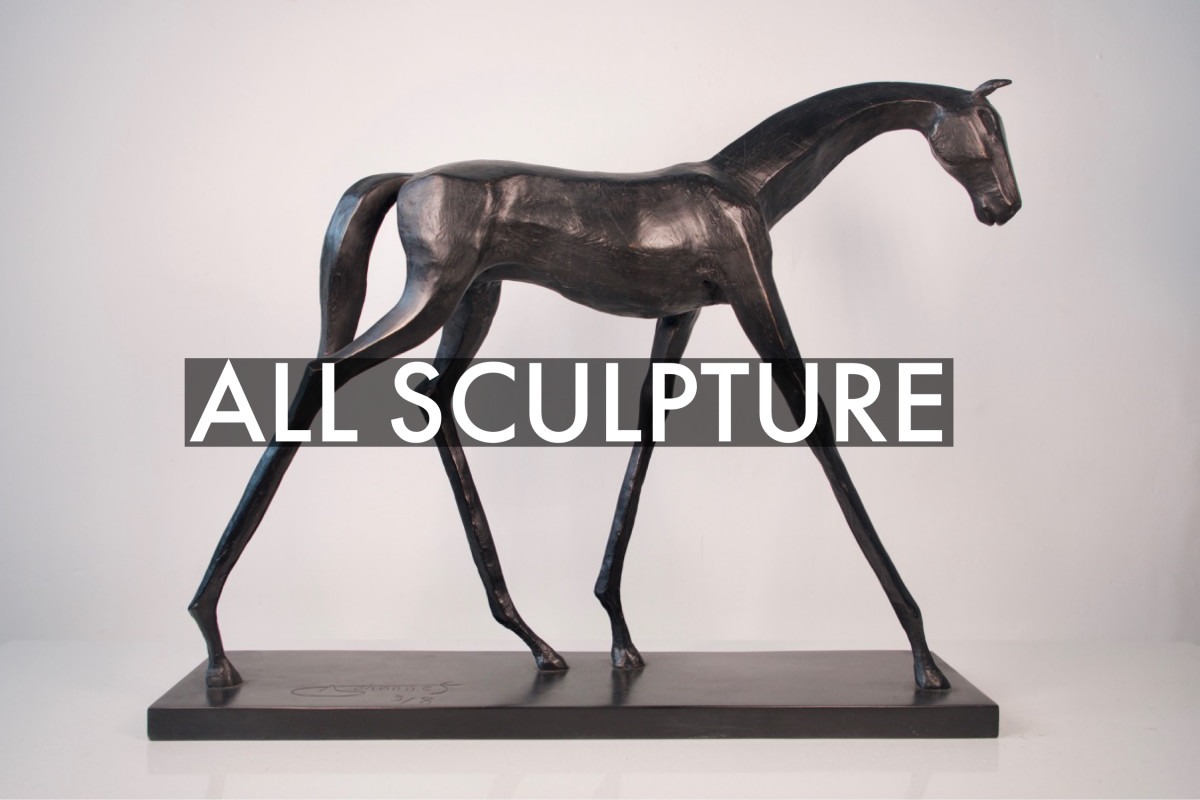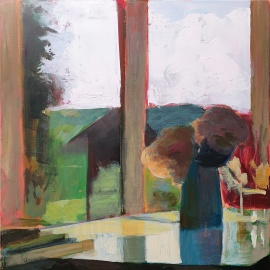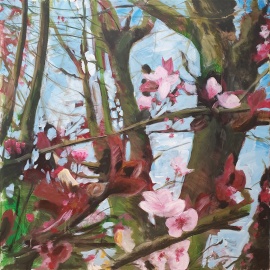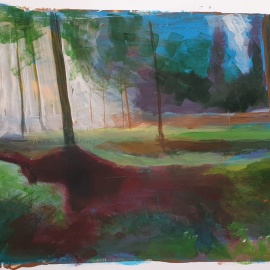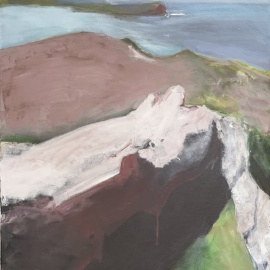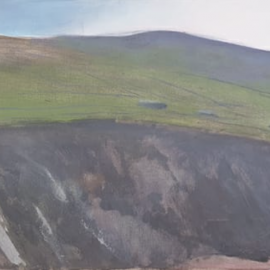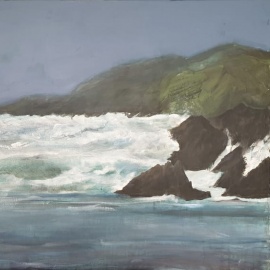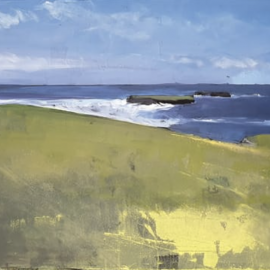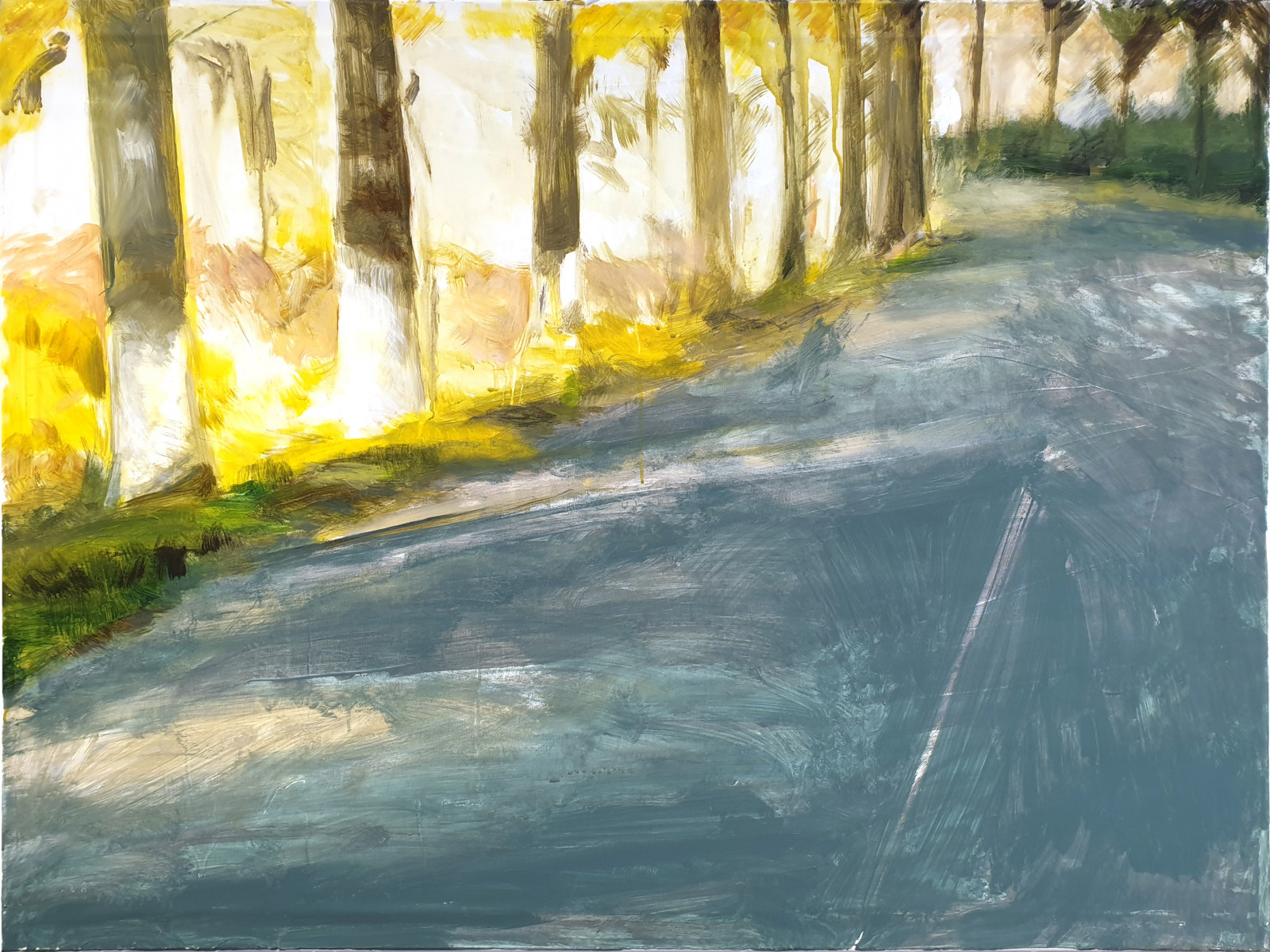Stefaan Vermeulen
Born on Oct 6th, 1966 in Hasselt, Belgium, Stefaan Vermeulen grew up in Genk, a provincial mining town and melting pot of more than 60 nationalities. His master studies in art from Hugo Duchateau and Ado Hamelrijck influenced him to develop a preference for natural materials, human scale installations and a deep interest in contemporary painting pur sang. Although one might find a layer of humour in some of his works, his drawings and paintings often show a sour and slightly melancholic view on reality that surrounds him. Stefaan Vermeulen is studying the boundaries and meanings in today’s way of depiction. He lives and works near Roman town Tongeren.
Unlike many painters who work in acrylics, Vermeulen does not use this medium in a thick pasty manner, instead he combines multiple, very thin layers (may be up to 20 layers sometimes) of paint. One could compare it to a way of painting that is more often used in watercolour, thus creating complex colour shades, transparencies and depth. Combined with a fairly ‘bold’ brush stroke, this results in a lot of details that almost occurs accidentally. He tries to create a painting that is in a way very true to nature, as in real life, where there’s also a lot of coincidence in how structures as well as details are created.
Most of his work has become part of private collections in Belgium, but a large marine painting can be seen in the library of the Karel de Grote Hogeschool in Antwerp. Vermeulen gained recognition by being selected for the Canvas collection in Bozar, Brussels and for winning the public vote prize at the Piet Staut Prize for painting in Beveren, Antwerp. His work is shown regularly at group and solo shows in Belgium and Holland.
On his painting inspiration and techniques, Stefaan Vermeulen says: “In recent years I have mainly been working as a landscape painter, a choice that has gone a bit by itself since I have lived in Haspengouw, which is a bit like Belgian Tuscany. I don't paint landscapes from a romantic approach, I rather ask myself the question 'how' I want to depict something. That is why this choice for the landscape is not a hard, perhaps even a semi-conscious choice. Landscapes were just what presented itself, had I lived in an urban environment that would probably have been my subject.
The reality that I see around me often seems inexplicably poetic to me. Maybe that is the eye of the artist, who does not look practical or problematic, but who is simply interested in the appearance of reality. I want to translate what I experience when I see this daily ordinary, but the subject and certainly the (possible) romantic meaning of an image - in a landscape this would be for example a sunset - are of no importance. It is in the translation into strokes of paint that I want to repeat that experience for the viewer, without using the original story I saw. So the final painting is not just an image of a landscape, it should autonomously replace the original image (which only I saw). Subject or place are therefore not important, but the texture on the canvas, the strokes of paint and that part of my actions that is visible to the viewer.
The core of the issue is that subject or story is only a very small and even negligible part of my work. What is important is: the brush stroke, the texture, the way of painting and depicting, the 'unfinished', the balance between what I do and do not depict, and between what I control and what I do not control and simply leave it to the paint (certain shades, how the paint runs over the canvas,...) My brush stroke is therefore often somewhat rough, dilettant,... In other words, I consciously do not want to paint well, but leave as much as possible to coincidences. For the most part everything happens as it happens. What is special about this is that the result is figurative. I actually use the means of an abstract painter (who leaves a lot to the paint and to chance) to get a figurative result in the end.
As a neo-impressionist, I have worked in recent years on a wide range of large and smaller landscapes. I base myself loosely on photographic material to create a poetic, semi-realistic representation in many layers of transparent acrylic on canvas or panel. In this way the subject becomes subordinate to light and colour, both of which are rendered with seemingly reckless and rough brushstrokes.
My focus in recent years on painting landscapes is not a flight from reality, my work belongs in our time. It invites the viewer to look at the world in a different way, not from a nostalgic reflex but more caring and slower, with more consultation and reflection. How can we cherish without being conservative?”
Quick Links
- Contact us about the artist's work
- Commission the artist
- View all available artwork
